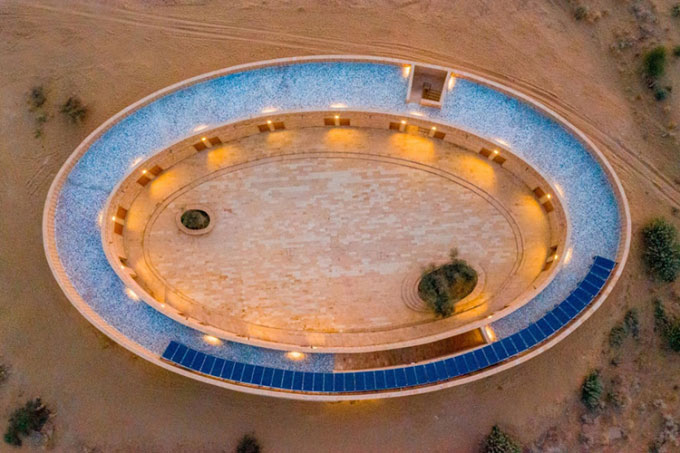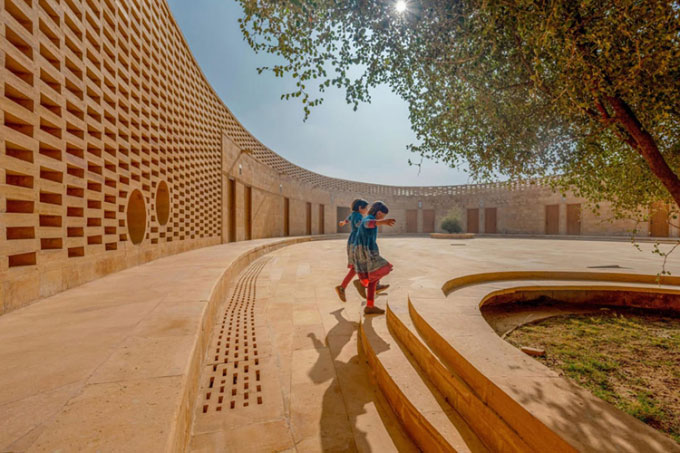Rajkumari Ratnavati Girls’ School features a unique elliptical design, utilizing sandstone and traditional design methods to combat the heat.
Located in the city of Jaisalmer in the Thar Desert of northern India, often referred to as the “Golden City” due to its numerous yellow sandstone structures, temperatures can soar to around 49 degrees Celsius during peak summer. The buildings in this area have long been designed to adapt to the heat. American architect Diana Kellogg adhered to this tradition when designing the Rajkumari Ratnavati Girls’ School, as reported by CNN on November 7.

From above, Rajkumari Ratnavati Girls’ School resembles an egg in the desert. (Photo: Diana Kellogg Architects)
Designing a comfortable learning environment is a significant challenge in the heart of the Thar Desert, where climate change is causing prolonged and intensified droughts. “There are methods that have been used for centuries to cool spaces. What I do is combine them to achieve effectiveness,” Kellogg stated, noting that temperatures inside the school’s rooms can be about 11 to 16 degrees Celsius lower than outside.
For the school’s construction, Kellogg chose locally sourced sandstone – a material that withstands the climate well and has been used for structures in the region for a long time. “This area has a lot of sandstone. It’s very affordable, and skilled stone masons are like magicians with stone. The stone really helps with insulation and also retains warmth at night,” she explained.
Among the traditional techniques Kellogg employed is the method of plastering the interior walls with a natural cooling material that helps release trapped moisture. Inspired by other buildings in the area, she also constructed a jali wall – a sandstone lattice wall that accelerates wind flow due to the Venturi effect, cooling the courtyard while providing shade. High ceilings and windows help release heat in the classrooms. Meanwhile, a solar panel canopy offers shade and energy.

Using local materials and design methods, the school adapts well to Jaisalmer’s climate. (Photo: Diana Kellogg Architects).
The school is designed to align with the prevailing winds and features an elliptical shape that captures and circulates cool air. Additionally, this shape symbolizes femininity, aligning with the project’s characteristics.
In principle, many of the cooling techniques used for Rajkumari Ratnavati School can be applied in other locations, but their effectiveness and sustainability will vary by site, according to Kellogg. For example, wind direction and different types of sandstone will adjust temperatures differently than materials used in Jaisalmer.
The school does not use air conditioning, not only due to their environmental impact but also because they are not common in the region. By applying traditional and natural cooling mechanisms familiar to the students, she believes they will feel comfortable in their surroundings and more confident.


















































